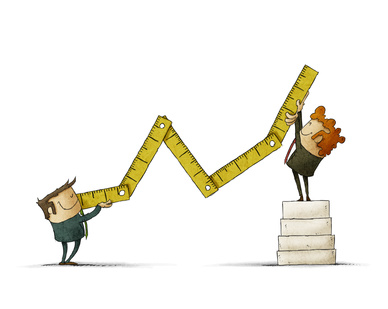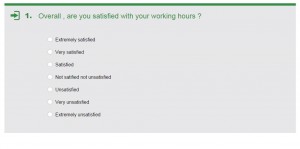The Likert scale allows to measure one’s attitude. The respondents express their level of agreement on a given topic.
This bears the name of its inventor, the psychologist “Rensis Likert”. An American psychologist born in the United States in 1903, and his death was followed in 1981. He was a potent professor at the University of Michigan, where he became distinguished upon areas of management along with his book “The participative government of the company “. This book enfolds his research results where he has successfully attempted to bring about why the relationship measures between the superiors and the subordinates bring about at times contrastingly different results even though they are placed in an identical organizational context.
>> Create your Online Survey with Drag’n Survey, click here

Presentation
This allows to measure the opinion and it contains between four to seven answer choices. These modalities of answers will allow to put into evaluation the level of agreement or of disagreement. The text of the proposed answers is variable. A notion of satisfaction, agreement, or of numbering could be incorporated into this.

The number of modalities can be either even or odd. If it’s even, it is said that the answer is in forced choice. Choosing a neutral modality (neither satisfied, nor dissatisfied) is not acceptable to be given to those who participate in the questionnaire. This is also known as the condition ” neither nor “.
Best practices
Respondents may reply to answers using the neutral modality using it as an “hideway”. In fact, this might seem that he does not express his ideas freely. The respondents normally use this option out of mere tiredness or simply because they do not know what to answer.
This leaves the research analyst clueless on how to interpret the results. They may be false and might not reflect the reality. Therefore, it is recommended to use the condition “neither nor” when the question must be essentially understood. Otherwise, increasing the choice of answers is also acceptable through which the respondent will find the category that exactly corresponds to his idea.
When we use a numbered scale, it is recommended to be precise as far as possible. Using numbers may tend to confuse the respondents. At times it could be hardly easy to identify which part is positive or negative.
It is preferable if the proposed answer modalities take the same nature. We shall say, for example, from the modality “extremely satisfied” to “extremely dissatisfied”. Thus, here we are dealing with an unidirectional scale or a unipolar scale. If they are not of the same nature, there is a high likelihood that the respondent might get confused.
Various display modes
This can appear under various forms. For example, multiple choice questions can be used, as shown in the picture above. When a questionnaire is mainly set up through measuring scales, the risk is to create a sense of tiredness in the respondent. In order to revitalize the survey you can make use of rating bars.
A rating bar is a more dynamic measuring scale which contributes to optimize the participant’s reactivity and his interest in an on-line survey.

Another variation of the rating bar are the ones including star or checkbox

Read the article:
French – échelle de Likert, click here
Portuguese – escala Likert, click here
German – Likert-Skala, click here